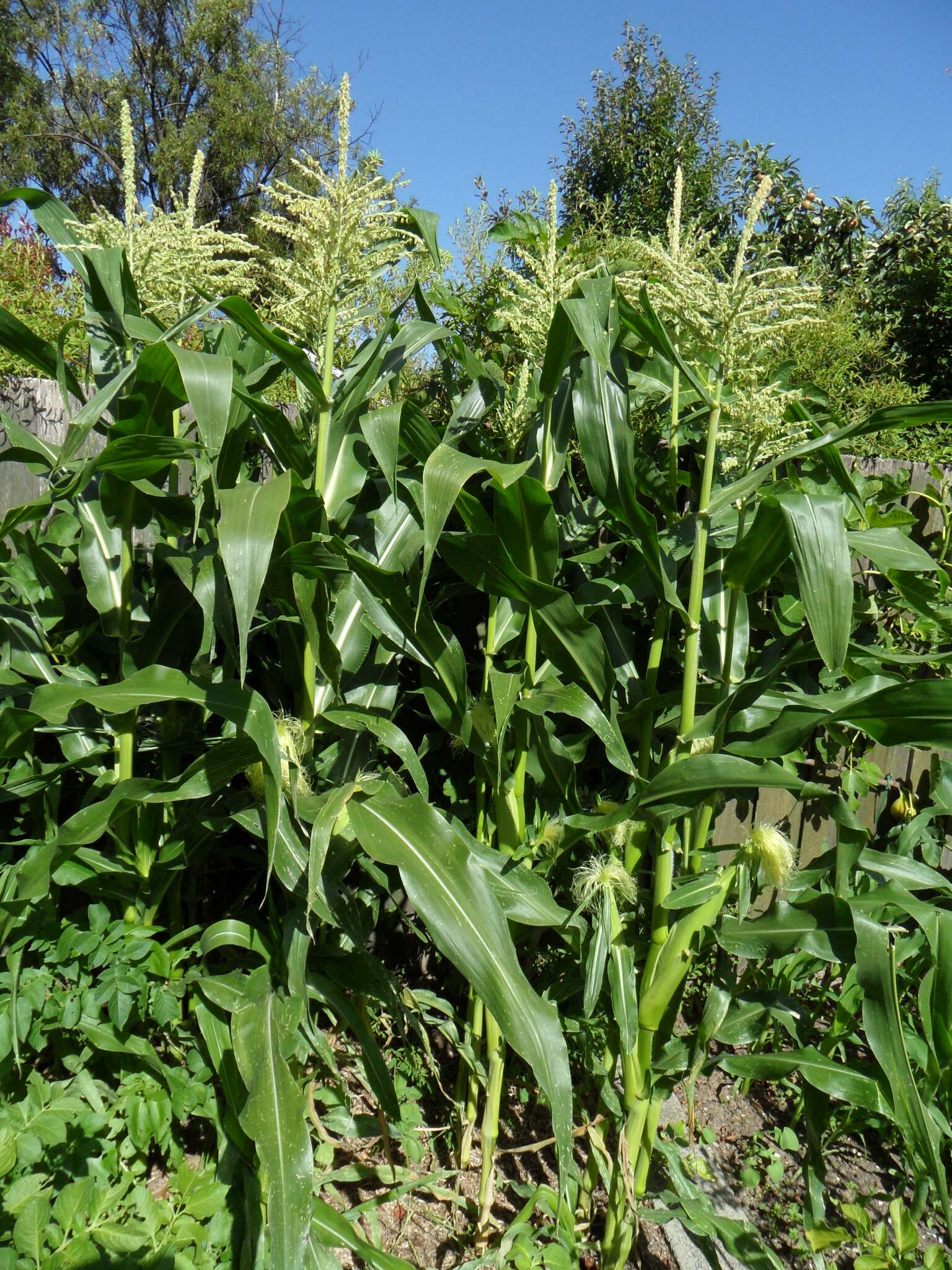
Classical Greek name (zeia) for a food grass.
Annual plant. Leaves flat, broad, rolled in bud. Ligule membranous. Inflorescence with male flowers in a terminal branched cluster; female clusters axillary. Spikelets arranged in longitudinal rows on a thick axis and enclosed by leafy sheaths. Male spikelets paired, 1 stalkless, 1 stalked. Female spikelets of 2 florets, the lowermost sterile. Glumes more or less equal, awnless, lower and upper glumes nerveless. Lemma awnless, hairless, 3-nerved. Palea long, apically notched.
Seed.
Z. mays is cultivated widely in the tropics as a food source but it is also used for oil, syrup, beer and spirits (such as bourbon), and in a range of forms for human consumption including popcorn, baby corn for stir-fry, cornflakes, cornflour and polenta. Ornamental forms have cobs with grains coloured red and/or black.
Superficially bamboo-like plants with characteristic corn cobs. Spikelets unisexual and sexes looking different, the female inflorescence enclosed by leafy husks.
4 species from Central America, cultivated in many tropical and subtropical regions.
Iltis & Doebley (1980).
Source: (2005). Poaceae. In: . Horticultural Flora of South-eastern Australia. Volume 5. Flowering plants. Monocotyledons. The identification of garden and cultivated plants. University of New South Wales Press.
